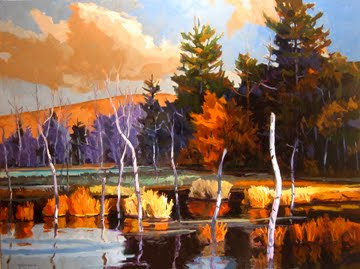Arthur B. Davies, oil, The Goatherd, c, 1913, Midwest Museum of American Art If you look up "museum" in the dictionary it will tell you the word comes to us from the Latin for "the seat of the Muses." I like that. Maybe that's why I have two inviting rocking chairs in my studio. Perhaps I'll put a neatly lettered sign on the door where passing muses may see it reading "Please Come In." We need such visitors, artists to help us with our work, and the everyone else as well just to lend our lives extra meaning and some fun. Above is a painting from the Midwest Museum of American Art's Permanent Collection by a painter I think is absolutely wacky but sometimes very good. Arthur B. Davies is usually considered part of the Ash Can School of American painters early in the 20th century. But you'll have to look long and hard to find ash cans in his paintings, unlike other members of that group like John Sloan and Robert Henri. Davies started out ...







